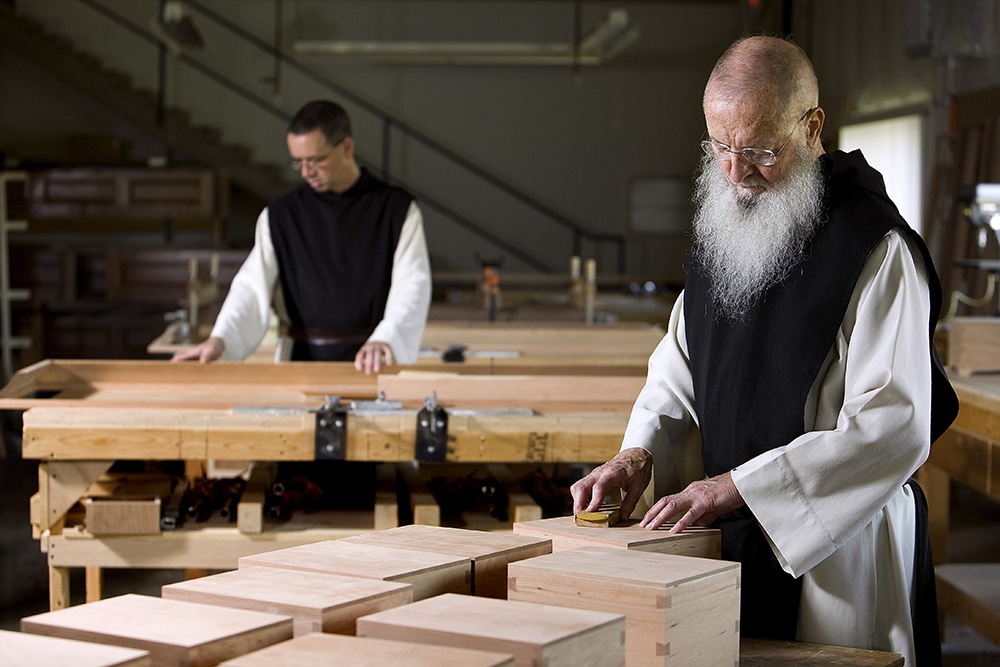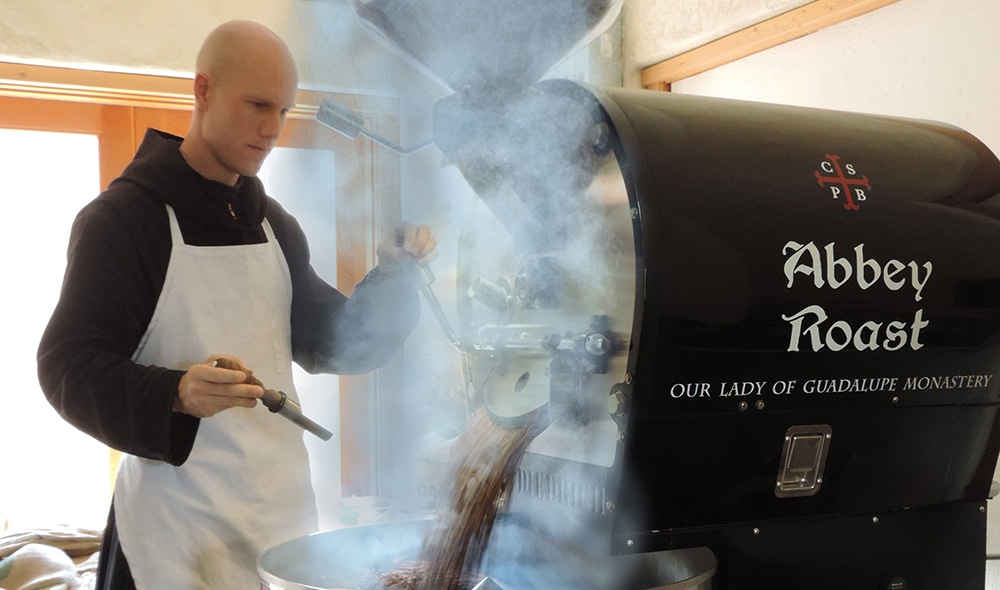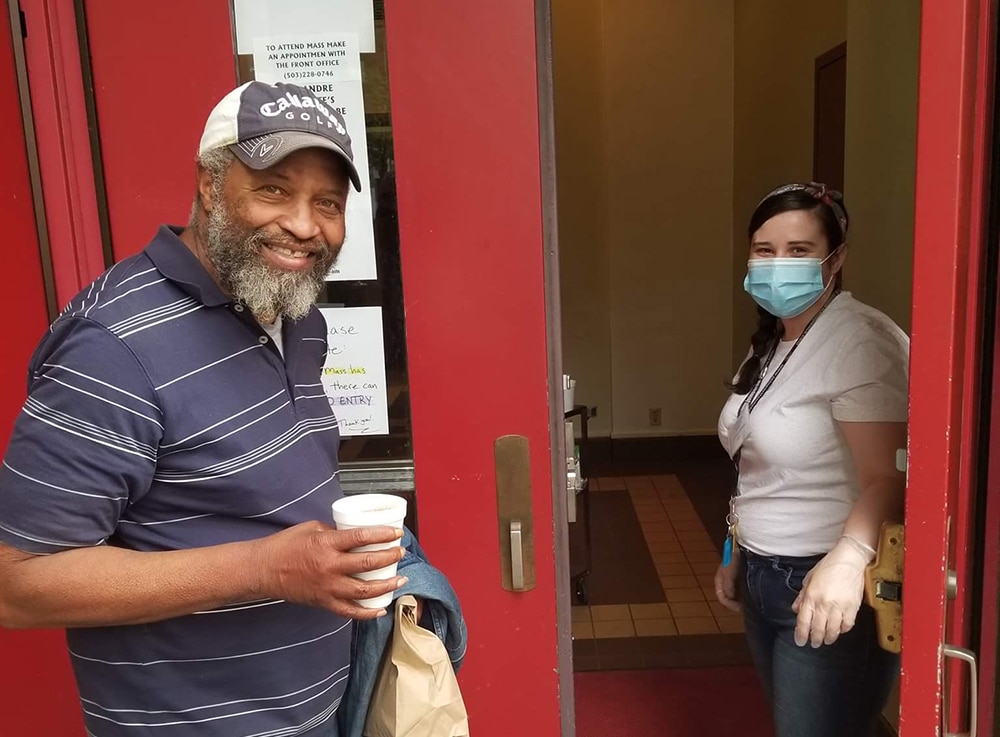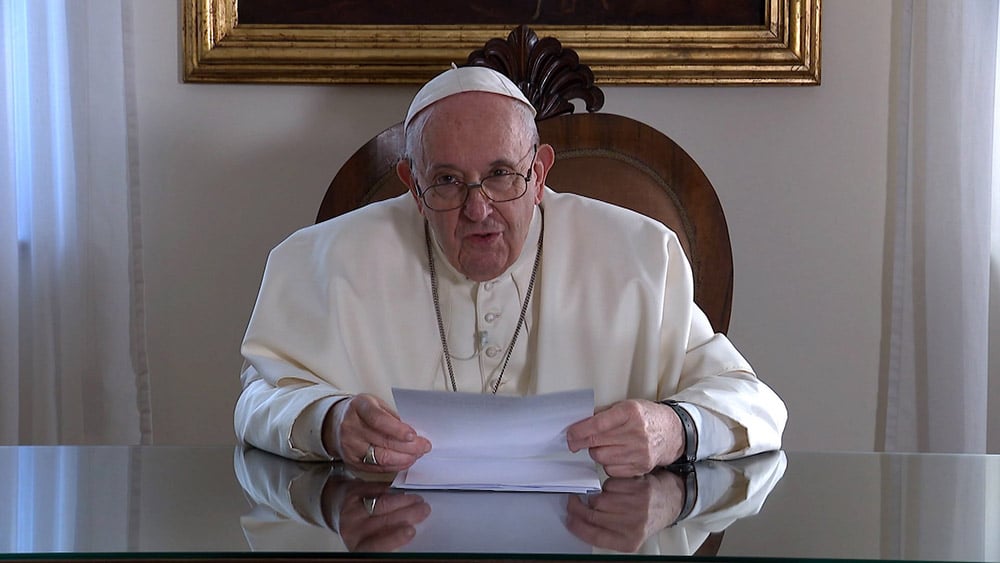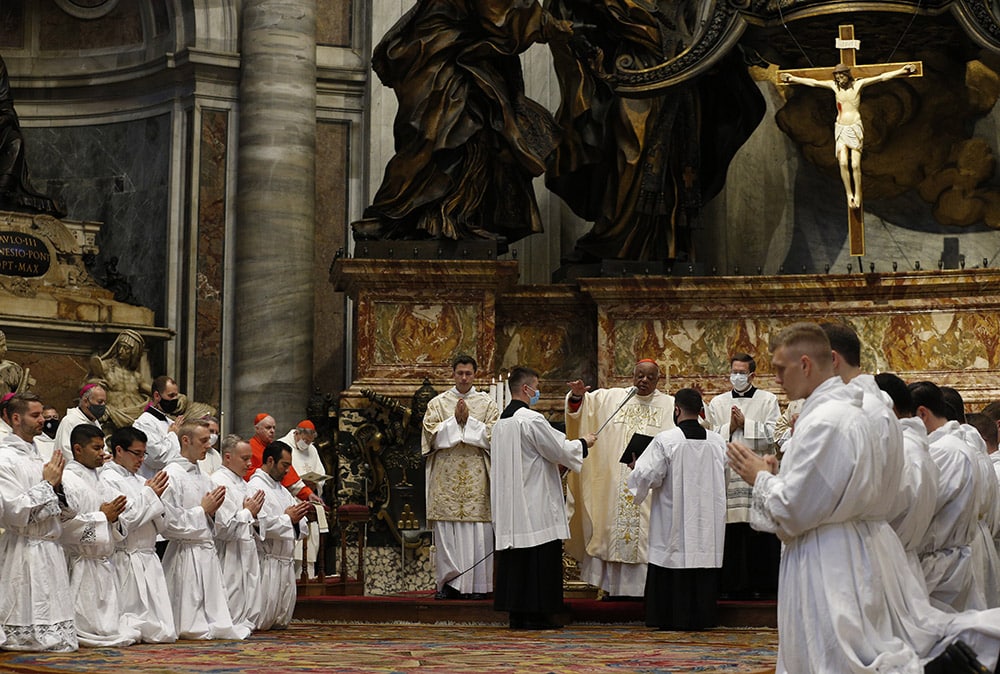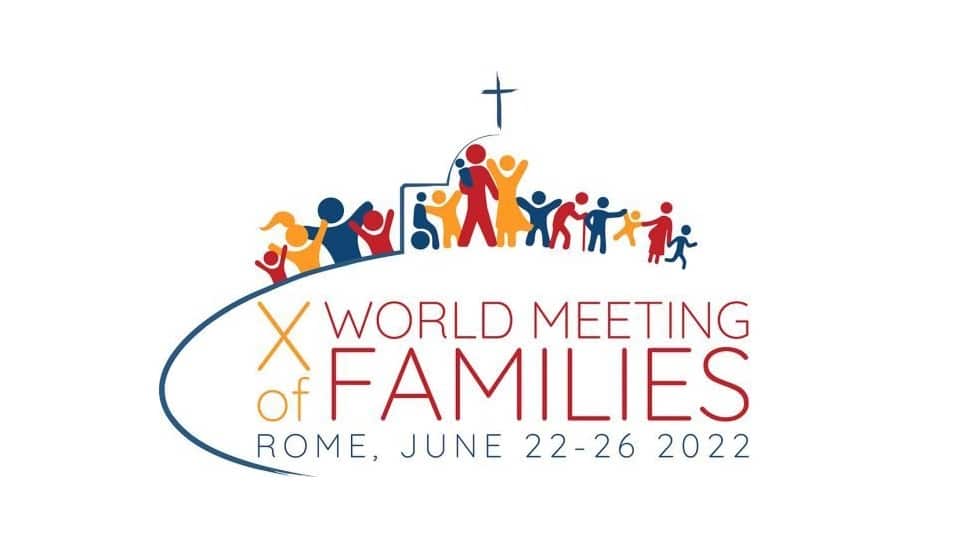The Trappist monks at New Melleray Abbey in Peosta, Iowa, manage the state’s second largest privately owned forest within their 1,800 acres. The land produces high-quality prized lumber, and the black walnut trees are considered some of the best.
From that forest comes the business, Trappist Caskets, that supports their community in a holistic operation. The monks plant and grow the forest, harvest the trees and are involved in every aspect of making the caskets, from the actual construction to the business end, to consulting with families in need and praying for the dead.
Sam Mulgrew brought the idea to them in 1999. He was already making caskets on his farm some 20 miles away, and he brought along his expertise to combine with their monastic tradition of supporting themselves through the work of their own hands. They tried it for two years, it worked, and Mulgrew became the CEO.
“People want these caskets because, psychologically and symbolically, they are so much richer than general mass-produced caskets,” Mulgrew said. “They are organic products made by monks and laypeople in a rural monastery where they are dedicated to a life of prayer. All of that is symbolically very rich.”
Read more from our Fall Vocations Special Section here.
By making wooden caskets and urns, the monks perform the works of mercy to bury the dead and pray for the dead. The labor of their hands reaches out to God’s heartbroken children in a time of need.
They make and deliver or ship about 2,000 caskets a year, priced from $1,300 for a simple pine design to $3,700 for walnut. The deaths are recorded in a memorial book, and the monks pray for the deceased. Brother Paul Andrew Tanner sends out cards on the first anniversary of a loved one’s death to let families know that the monks are still praying for them.
“That means a lot to them,” Brother Paul said. “I got a thank you note back from a woman whose husband died, and she didn’t think that her family even remembered. People just get on with their lives, and she said that my card made so much difference.”
The monks have a fund so that they can provide caskets free of charge for children who have died.
“We get about five requests a week for those,” Brother Paul Andrew said. “We have been doing this for about 20 years, and it’s a very valuable service that we provide.”
The funeral pall
During Catholic funerals, the casket is met at the door of the church, covered with a cloth and blessed by the priest. The cover, known as a pall, from the Latin pallium, meaning cloak, remains on the casket when it’s brought before the altar and is removed before leaving the church. Very often, the family will put the pall in place.
The tradition of covering the casket with a cloth dates back to the Middle Ages.
“It was originally used by poor people who couldn’t afford a casket, and it became kind of a shroud that they were buried in,” said Father Emmanuel Morinelli, a Trappist monk at St. Joseph’s Abbey in Spencer, Massachusetts. “It’s only later that it was used over a casket, and it was black at that particular time. It was used to show that all are equal in the eyes of God, whether a person had an ornate casket or a simple pine box. Everyone is equal when you put that pall on.”
The monks have been making liturgical vestments since 1947, when they opened a shop to make their own in the undercroft of their abbey church in Rhode Island. When visitors started requesting vestments, they expanded their work and called their labors the Holy Rood Guild. They moved to Massachusetts in 1950 after a fire in their monastery, and making vestments became one of their major sources of income. Their line includes funeral sets of a matching chasuble (or dalmatic for a deacon) and pall.
Father Emmanuel, the guest master at St. Joseph’s Abbey, worked at the Holy Rood Guild for 20 years.
“The use of the funeral pall is new in this country and only began to show up in the early 1970s when the new rite of the funeral was put out,” he said. “Before that, if a pall was used, it was usually black. For centuries, black was solemn, and people would wear black clothing to funerals. Purple is still being used and focuses more on sorrow. The white vestments are appropriate when the celebration is hopeful. White also relates to baptism, so the white funeral pall is meant to represent the white garment that’s given when a person is being baptized. It’s also a sign of Christian dignity.”
The white pall also symbolizes the newly baptized and Christ’s joyful triumph over the darkness of sin and death.
Six monks and several employees work at the guild to make vestments and funeral sets not only for Catholic clergy but also for other denominations that wear liturgical garments. They are made from damask, tapestry, wool and polyester, and can be designed to be beautifully ornate or more plain.
“We don’t use a funeral pall for our own funerals,” Father Emmanuel said. “The reason is that we are not buried in a casket. In Trappist tradition, we are buried in our habit and cowl, and then when we get to the cemetery we’re wrapped in a white shroud and the body is lowered directly into the grave.”
The cemetery
Cool Springs Natural Cemetery at the Trappists’ Our Lady of the Holy Cross Abbey in Berryville, Virginia, is a sacred location for the public to lay their loved ones to rest. It’s further a witness to monasticism’s abiding respect for and stewardship of the earth.
The grounds that have panoramic views of the Shenandoah River and Blue Ridge Mountains are consecrated as a Catholic cemetery, but people of all faiths and beliefs are welcome to be buried there.
“The beauty, simplicity and ecologically sensitive nature of our natural cemetery is a fitting tribute to our Christian belief in the inalienable dignity of the human person and our belief in the resurrection of the body,” Father Joseph Wittstock said. “It is, rather, another expression of the ancient monastic practice of hospitality, both to those buried in our cemetery and to the loved ones who visit their graves.”
The monks are not involved in those funerals, but they are partly involved with the upkeep of the cemetery and the grave sites. They also pray daily for the deceased and for the families and friends of those who have died.
“This is especially true in situations where death has been sudden and under tragic circumstances,” Father Joseph said.
Many who choose to be buried on the grounds of a monastery, he added, want to support the monks.
“Many of those who have buried loved ones here speak of the peace and tranquility they experience in the simple act of visiting the cemetery,” Father Wittstock said.
Maryann Gogniat Eidemiller writes from Pennsylvania.

